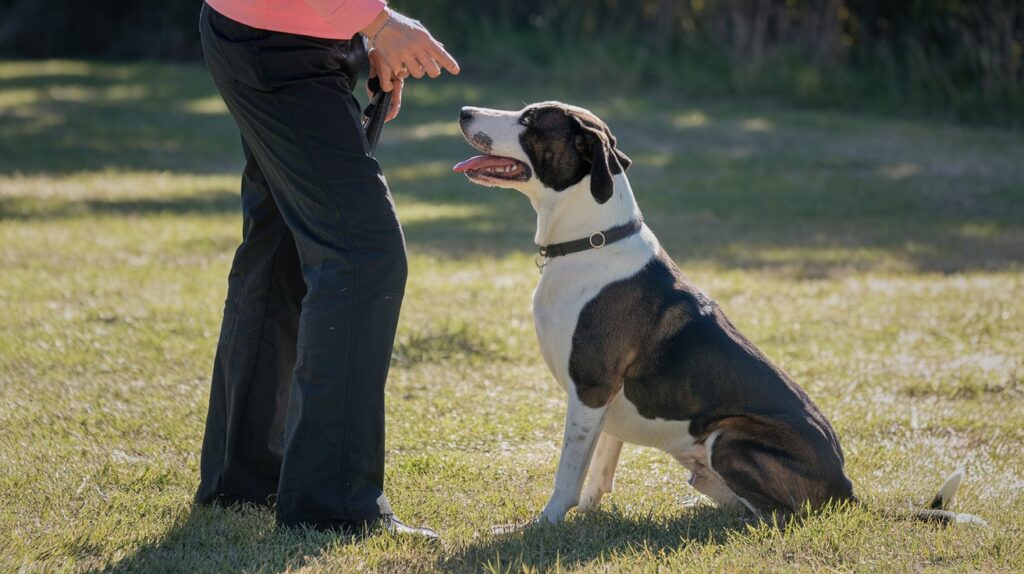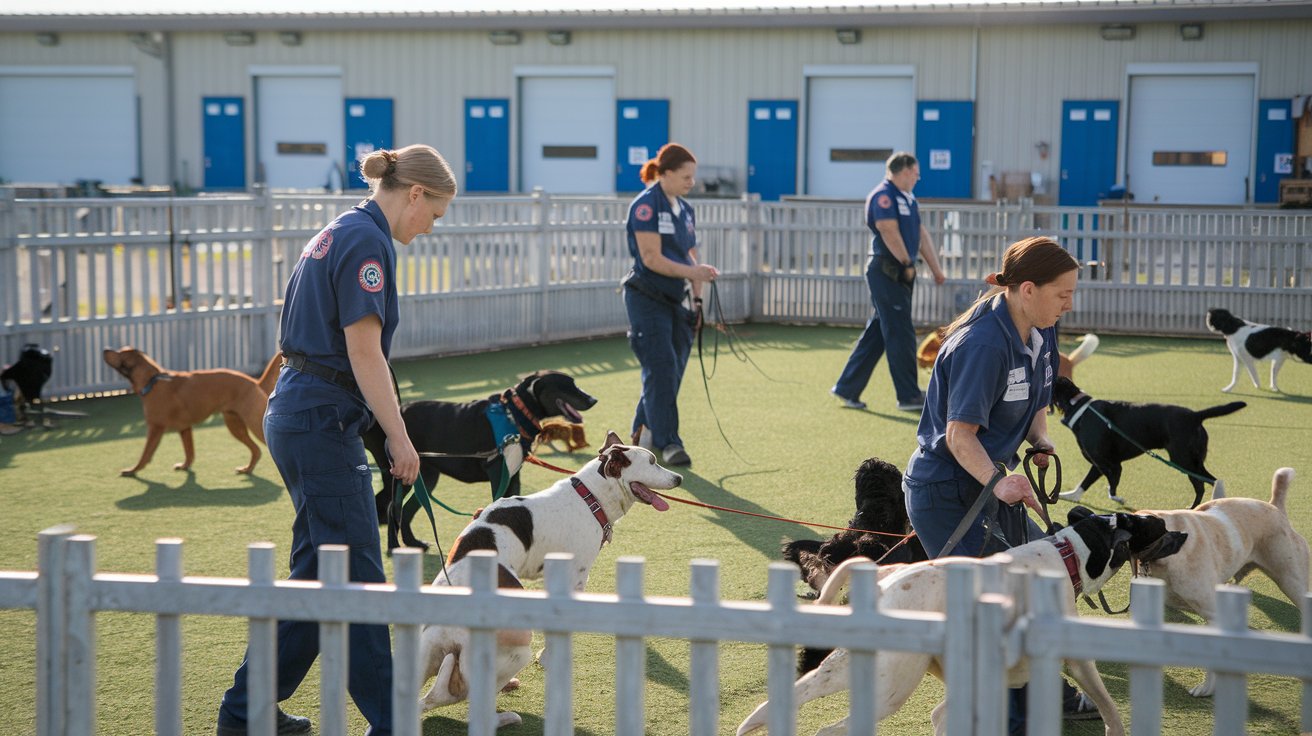Table of Contents
- What is the “Do As I Do” Dog Training Method?
- The Science Behind the Method
- How Does the “Do As I Do” Method Work?
- Benefits of the “Do As I Do” Dog Training Method
- Practical Applications of the “Do As I Do” Method
- Common Challenges and Solutions
- Steps to Implement the “Do As I Do” Method
- Conclusion
- FAQs
The “Do As I Do” dog training method is a ground-breaking technique that leverages dogs’ natural social learning abilities. Unlike traditional training methods that rely heavily on repetition and reward-based conditioning, this approach encourages dogs to imitate human actions. This article explores the principles, benefits, and practical application of the “Do As I Do” method, providing a comprehensive guide for dog owners and trainers.
What is the “Do As I Do” Dog Training Method?
Developed by Claudia Fugazza, an expert in animal behavior, the “Do As I Do” dog training method is based on social learning theory. This method capitalizes on a dog’s inherent ability to learn by observing and mimicking humans. In essence, the dog is taught to perform tasks by watching their owner and replicating the observed behavior.

The Science Behind the Method
Social learning in dogs has been a subject of extensive research. Studies indicate that dogs possess cognitive abilities similar to those of young children, particularly in their capacity to understand human gestures and expressions. Research conducted by Fugazza and her colleagues demonstrated that dogs could effectively learn new behaviors through imitation. This finding underscores the potential of the “Do As I Do” method as a powerful training tool.
How Does the “Do As I Do” Method Work?
- Foundation Training: Before starting the “Do As I Do” method, dogs must be familiar with basic commands such as sit, stay, and come. This foundational training ensures that the dog understands the concept of following instructions.
- Introducing the Cue: The trainer introduces a unique cue, such as “Do it!” to signal the dog to imitate the action. Consistency in using this cue is crucial for the dog to associate it with the imitative task.
- Demonstration Phase: The owner performs a simple action that the dog can replicate, such as touching a target or opening a door. The dog observes the action without interference.
- Imitation Phase: After observing the demonstration, the dog is encouraged to perform the same action. Initially, the dog may require guidance, but with repetition, they learn to imitate without prompts.
- Reinforcement: Positive reinforcement, such as treats or praise, is given when the dog successfully imitates the action. This reinforcement strengthens the learning process and encourages further imitation.
Benefits of the “Do As I Do” Dog Training Method
- Enhanced Learning Speed: Dogs trained using the “Do As I Do” method often learn new behaviors faster compared to traditional training methods. The imitation process leverages the dog’s observational skills, reducing the need for repetitive instruction.
- Stronger Bond: This method fosters a deeper bond between the dog and the owner. The collaborative nature of the training enhances trust and mutual understanding.
- Mental Stimulation: Imitation training provides significant mental stimulation for dogs. It challenges their cognitive abilities and keeps them engaged, reducing boredom and related behavioral issues.
- Versatility: The “Do As I Do” method is versatile and can be used to teach a wide range of behaviors, from simple tasks like fetching objects to complex tricks like dancing.

Practical Applications of the “Do As I Do” Method
- Everyday Tasks: Owners can teach dogs to assist with household chores, such as turning off lights, fetching the remote control, or closing doors.
- Service Dog Training: This method is particularly useful for training service dogs. By observing and imitating, dogs can learn tasks that assist individuals with disabilities, such as retrieving items or opening doors.
- Entertainment and Performance: Dogs can learn entertaining tricks for performances or competitions. The “Do As I Do” method simplifies the process of teaching complex routines.
- Problem-Solving Skills: This method encourages dogs to think critically and solve problems by observing human actions, enhancing their overall intelligence and adaptability.
Common Challenges and Solutions
- Initial Confusion: Dogs may initially be confused by the concept of imitation. Patience and consistent reinforcement are key to overcoming this hurdle.
- Distractions: Training in a controlled environment with minimal distractions ensures that the dog focuses on the task at hand. Gradually introducing distractions helps to generalize the behavior.
- Consistency: Consistent use of cues and rewards is essential for successful training. Inconsistent signals can confuse the dog and hinder learning.
- Patience: Like any training method, the “Do As I Do” approach requires patience. Some dogs may take longer to grasp the concept, but persistence pays off in the long run.

Steps to Implement the “Do As I Do” Method
- Choose Simple Actions: Start with simple, easy-to-imitate actions. Gradually increase the complexity as the dog becomes more adept at imitation.
- Use Clear Cues: Establish clear, distinct cues for imitation. Consistency in these cues helps the dog understand what is expected.
- Practice Regularly: Regular practice sessions reinforce learning. Short, frequent sessions are more effective than long, infrequent ones.
- Monitor Progress: Keep track of the dog’s progress and adjust training methods as needed. Celebrate small victories to keep the dog motivated.
Conclusion
The “Do As I Do” dog training method represents a significant advancement in canine training techniques. By harnessing the power of social learning, this method offers a more intuitive and engaging way to train dogs. Whether for everyday tasks, service training, or entertainment, the “Do As I Do” method provides a versatile and effective tool for dog owners and trainers. With patience, consistency, and positive reinforcement, this approach can transform the way we train and interact with our canine companions.
Also Read: Tips for Dog Training – A Comprehensive Guide for Pet Owners
FAQs:
1. What is the “Do As I Do” dog training method?
The “Do As I Do” method trains dogs by imitating human actions, fostering learning through observation and positive reinforcement.
2. How does the “Do As I Do” method work?
It works by teaching dogs to copy actions like picking up objects or opening doors after watching their owner, enhancing their cognitive abilities.
3. What are the benefits of “Do As I Do” training?
This method strengthens the bond between dog and owner, promotes mental stimulation, and offers a fun way to teach complex tasks through imitation.
4. Is “Do As I Do” suitable for all dog breeds?
Yes, it can be adapted for most breeds. However, dogs with strong bonds and high intelligence may learn faster, but patience is key for all.
5. Can I combine “Do As I Do” with other training methods?
Absolutely! It complements traditional training methods like positive reinforcement, making it a versatile addition to your dog’s learning routine.
6. How long does it take for dogs to learn with this method?
Learning time varies, but most dogs grasp basic imitation within a few weeks. Consistency and patience are crucial for successful training.





One thought on “Do As I Do Dog Training Method: A Revolutionary Approach to Canine Learning”